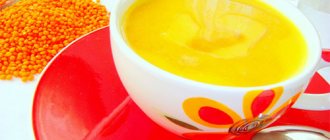How to set up the process correctly?
Motivation
Motivation is the key to success in absolutely any endeavor. It is necessary to motivate your child to solve problems. Explain to him why it is important to learn how to perform mathematical manipulations, in what life situations these skills will be useful in the future (for example, counting change in a store, finding out the speed of a car, the time of arrival at a certain place).
Parental help
Never force your child to solve problems on their own. After all, your main goal is to teach him to build the correct algorithm for performing a task in such a way that this skill becomes automatic.
Study the condition
Before you begin solving a particular problem, you need to carefully and carefully study its conditions. Get acquainted with the smallest details and details, on which the final value may depend. Divide the task into 4 parts:
- condition - reference data: what is known, what happened;
- the main question is what needs to be found;
- solution;
- answer.
Writing a short note
To obtain the fastest and most accurate result, it is necessary to create a short record or plan with basic data and numerical values. You can also draw a small drawing describing the task condition. A visual representation of the problem will help you build the correct algorithm for solving it.
Solution
The completion of any mathematical task must be spoken out loud, that is, the child must briefly explain each of his actions, asking intermediate questions (for example, the speed is not known, but I can find it), thereby developing his own logical thinking. The solution to the problem obeys the law: given 2 data, you need to find 3.
Answer
Correct formatting of the answer is essential for logical completion. The answer is always copied from the assignment question. For example, if the question was: “How many apples did Misha give to Petya?” The answer should be structured as follows: “The number of apples that Petya received from Misha is equal to such and such a number.”
Daily activities
It is necessary to conduct daily training sessions with the child to complete various tasks. But, the main thing is to do this little by little, for example, 20-30 minutes a day, gradually increasing the working time.
it is necessary to teach the child to learn, that is, to act independently, make decisions and overcome school difficulties, and not think for him and dictate ready-made decisions
Main problems in studying geometry
- When studying geometry, theory is of great importance.
- Knowing the theory alone is not enough. Often, students, without thinking, memorize the formulation of the theorem and its proof, but at the same time do not have the slightest idea about its application. Don't do this - figure it all out!
- Inability to draw a drawing. But a well-constructed drawing is the key to success in solving a problem, at least 1/3.
- Schoolchildren try to make assumptions from their drawing about any properties of the figure that are not indicated in the assignment. For example, they build an isosceles triangle and begin the solution, starting from the properties of it, although there is no such condition in the task.
- Schoolchildren are not able to construct a chain of logical reasoning that will lead to solving a task.
- Features of the psychological development of schoolchildren at this age.
Geometry is a subject unlike any previously studied. Everything in it is based on logical reasoning. Familiarization with new concepts, terms, symbols. Students often lack spatial reasoning. There is no ability to generalize.
Sample tasks with an algorithm of actions
Below we will give several examples of simple problems for elementary school students that will help parents teach their child to complete any mathematical tasks. After all, you need to start with light material.
Exercise 1
During the performance, the illusionist pulled 2 white rabbits and 4 black ones from his hat. How many rabbits did the magician get?
To solve this problem, follow this algorithm:
- the illusionist has 2 white and 4 black rabbits;
- question - determine the total number of rabbits that the magician got;
- add 2+4;
- in the end you will get - 6 rabbits;
- answer - the magician pulled out only 6 rabbits from the hat.
Task 2
6 porcini mushrooms grew under the tree, and 4 more chanterelles. How many chanterelles have grown?
Make a solution plan:
- under the spruce there are 6 porcini mushrooms and chanterelles, the number of which is 4 more;
- question - determine the number of chanterelles under the tree;
- add 6+4;
- result - 10 chanterelles;
- answer - there were 10 chanterelles under the tree.
Task 3
There were 10 icicles hanging on the roof. Vanya knocked down 6 with a stick, and Semyon knocked down 2. How many icicles are left hanging on the roof?
Follow the solution algorithm:
- in total there were 10 icicles on the roof, Vanya knocked down 6, and Semyon 2;
- question - determine the number of icicles remaining on the roof;
- add 6+2 = 8, that is, the boys knocked down only 8 icicles;
- subtract from 10-8=2;
- answer - there are 2 icicles left on the roof.
Task 4
Anya cut out 7 squares, 5 triangles from paper, and 3 times more circles than triangles. How many geometric shapes did Anya cut out?
Use the following solution algorithm:
- Anya cut out 7 squares, 5 triangles, and circles 3 times as many triangles;
- question - determine the total number of geometric shapes cut out by the girl;
- first, find out the number of circles - multiply 5x3=15;
- now count the total number of figures - add 7+5+15=27;
- answer - Anya cut out 27 geometric shapes.
Task 5
In order to prepare lunch, the cook needed 24 kg of potatoes, 4 times less onions, and 3 times less beets than onions. How many kg of beets did the cook need?
Solution algorithm:
- the cook took 24 kg of potatoes, onions 4 times less than potatoes, and beets 3 times less than onions;
- question - determine the amount of beets the cook needs to prepare dinner;
- find out how many kg of onions the cook needed - divide 24:4=6;
- calculate the amount of beets - 6:3=2;
- answer - the cook needed 2 kg of beets.
In this article, you learned about the main types of problems and how to solve them correctly, following a “universal” algorithm. Give your child enough time to study, try to explain to him everything that he does not understand, do not shout or put pressure on him.
how to learn to solve geometry
I am far from the dacha, but I decided to repost this amazing person, I hope that you will learn a lot of useful things for yourself!
Amazing vegetable garden of Igor Lyadov
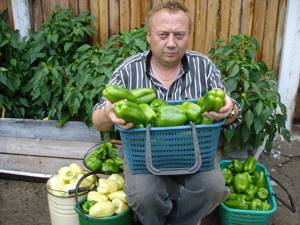
At the request of many of my friends, I will tell you how I grow vegetables. Many summer residents are already planting in this way. I'll try to explain it to you. I work, so I can only go to my summer cottage on weekends. At the same time, you need to rest after a week of work, eat barbecue, take a steam bath, and work a little on the land. Currently, there are several problems in gardening: Soil fertility is falling. The earth becomes dense, depleted and gray in color. A drop in fertility entails a decrease in harvested crops.
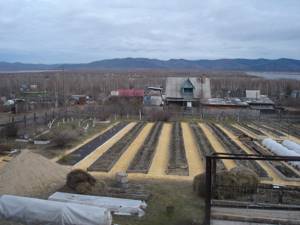
The use of mineral fertilizers and pesticides leads to contamination of soil, water, air and food, which leads to human illness. Traditional agricultural technology used by most gardeners is very labor-intensive. And this reduces interest in gardening among young people.
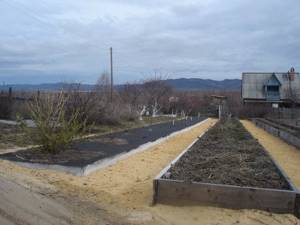
However, all these problems can be solved quite easily if Natural farming is used instead of traditional farming. Such agricultural technology not only preserves, it also restores soil fertility. The consequence is an increase in the productivity of garden crops. Mineral fertilizers are not used, which preserves the purity of Nature and preserves human health. A number of gardening operations in natural agricultural technology are used less frequently than in traditional ones. And some are completely absent from it. All this reduces the labor intensity of cultivating land and caring for plants. In my opinion, it is more important to return to nature and forget the postulate that the soil needs to be stuffed with fertilizers, tormented with shovels and sprinkled with pesticides. Natural farming is, first of all, gentle cultivation of the soil, protecting it from temperature changes, returning nutrients that the earth generously gave to plants.
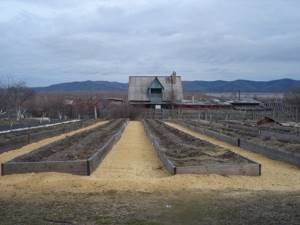
Every year in the spring, when we arrive at our summer cottage, we sow or plant vegetables in our beds. The size of the beds is from 1.4 meters to 2 meters wide, the paths between them are from 20 cm to 40 cm maximum. This is called the traditional way of planting vegetables in the garden. The plants in such beds, especially in the middle, often get sick, rot, and as a result they develop poorly; the vegetables are small and cannot be stored for a long time. But for pests, a weakened plant and good nutrition, and offspring can be laid near it. Weeding and cultivating such beds is a pain. But I saw one positive side to such a bed. The outer plants, relative to those located in the middle, looked more worthy. Larger ones are not susceptible to disease and are convenient to weed, thin out, etc. I also thought about one more factor. A single tree along the alleys within the city, no one feeds it, the foliage it throws off and then they try to remove it for appearance and beauty. Although this foliage could serve as food for the tree. So how does this tree exist and where does it get its food? In recent years, scientists have found that about 60% of the plant takes its nutrition from the air. This is certainly interesting.
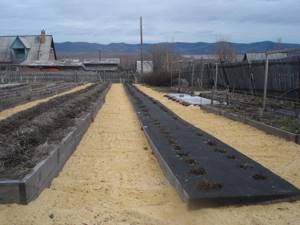
The unpredictability of our Far Eastern climate, high temperature differences, night and day, dry or rainy summers, excessive rainfall towards the end of August and the beginning of September confirmed the methods of cultivating vegetables that I had chosen over many years of trial and error. I came to the conclusion that we need to look for another method that is less labor-intensive, but at the same time with the opportunity to obtain higher yields. I combined two technologies. 1. “Narrow beds - a unique technology of vegetable growing for small areas.” 2. “Agricultural technology of natural farming.”
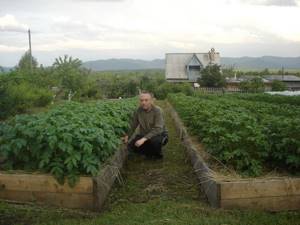
I have become convinced that organics can unleash all the capabilities of plants, saving energy and time. Only with good compost can you see and evaluate the quality of Western and domestic varieties: most of them are created for organic soil. I am sure that we cannot escape organics. That’s all there is to it: learn how to compost and also set up permanent beds – once for many years. Vegetable growing on narrow ridges was developed by J. Mittleider in the 70s of the last century and brought by the author to Russia in 1989. But blindly copying techniques and advice, even the best ones, will lead nowhere. There must be a creative approach to understanding the biological laws of the crop itself, and the processes occurring during its cultivation. Mitlider has one drawback (this is my opinion) when using mineral fertilizers, the taste of the fruit is unnatural. To correct this, instead of mineral fertilizers, I use humus, ash, manure, herbal infusion, etc. (I am a supporter of organic fertilizers). I am for a clean environmental product. But you shouldn’t perceive mineral fertilizer as poison. The only thing is to follow the dose. It is better not to feed the plant than to overfeed it.
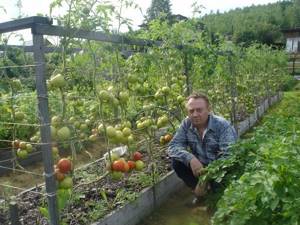
What I am especially grateful to J. Mittleider for is the development of narrow beds. Although Mittleider does not recommend placing the box on narrow beds, I still put together the boxes. Nature itself suggested this to me. In the spring, many summer cottages are flooded, the water does not have time to recede, and there is water in the passages. We have the same problem at the end of August and beginning of September - it rains day and night. And in the middle of summer it can rain for 2-3 days, or it can flood the entire garden in half an hour. Therefore, raising the bed 15-25 cm above the path solves this problem. The width of the bed is 60 – 100 cm, the length is arbitrary. The gap between the beds is 60 - 80 cm. It just seems that the soil in the aisles is walking around uselessly. It’s the passages that work, and how!

A vegetable container is a high bed, the walls of which are made of bricks, logs, timber, boards, stone, slate... The beds stretch from north to south. The passages between them can be mulched with sand, sawdust, roofing felt, etc. I preferred the lawn, which I cut with a trimmer once a month. I filled some passages with sawdust. The beauty of the garden leaves no one indifferent. There are no weeds, the site is clean and beautiful.
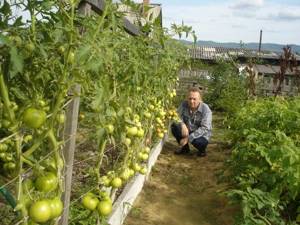
Box - the box is filled with organic matter. Plant remains (grass, straw, leaves) are placed down, then compost or manure, or we spill herbal infusions and the like; The soil from the passages is placed in the top layer. Thus, the box is filled. Each bed consists of 2 rows of vegetables, planted along the edges in a checkerboard pattern between vegetables. This geometry hides a huge reserve of productivity, it has long been noticed: the outer plant develops almost twice as well as those in the middle - they have much more light and space for growth. And here - all the plants are extreme. A wide row spacing is necessary in order to give them light and space. A small area of organic matter produces more than a large area of soil. Anyone who has worked on narrow ridges for at least one season is convinced of the enormous possibilities of this method and simply cannot return to traditional technology. Working in the beds, a person experiences joy not only from a good harvest, but also from the process of growing vegetables itself.
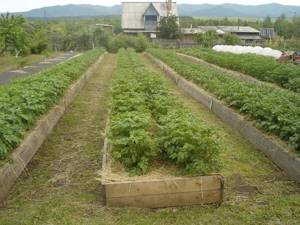
The beauty of the vegetable garden, which is more like a park, leaves no one indifferent. There are no weeds, the site is clean and beautiful. I plant cabbage, eggplants, peppers, tomatoes, etc. in two rows in a checkerboard pattern. In four or three rows I plant onions, garlic, beets, lettuces, radishes, carrots, etc. Disadvantages Requires material costs in the first year to build a bed. This tiny drawback makes the container inaccessible to most summer residents.
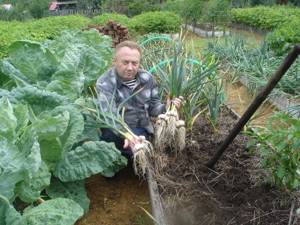
Advantages This bed works for several years, one might say forever (replenish it with waste, plant debris, leaves, etc.). After digging, sow green manure. When planting, you do not need to add compost or rotted manure into the hole. This bed is itself compost. The humus is not washed away, since the bed is fenced. According to many agronomists, 60–80% of the plant receives its nutrition from the air, so large passages play a significant role in the biological process of the plant. The crop receives good lighting and sufficient air flow. About 30% of the plant receives its nutrition from the ground. Naturally, a narrow bed uses 2 times less organic and mineral fertilizers compared to a standard bed. At the same time, you will get a much higher harvest from a narrow bed. I've been testing this for several years and it shows in my photos. Contains a large amount of nutrients and moisture reserves
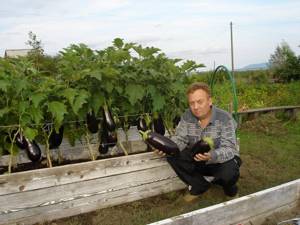
Convenient watering. No stagnation of water Does not require hilling, Does not require weeding - if the bed is mulched Does not require digging, only loosening by 7 - 10 cm. You can plant early, since the beds warm up faster in the spring than usual. In narrow beds it is easy to do crop rotation. Where you planted onions last year, you can plant carrots or cabbage this year. The beds are all the same width. Productivity increases by 100% or more. Tubers and root vegetables are clean without visible signs of disease. Beautiful and easy to work with. Takes up minimal space and does not create dirt or clutter.
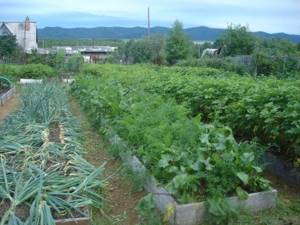
It is very convenient to make shelter with plastic arcs, which are sold in seed stores. We put 2 pegs on both sides of the bed and put an arc on them. The distance between the arcs is about a meter. Depending on the length of the bed, you install the required number of arcs. Covering material or film can be used over the arches until the threat of frost has passed. It is this system of narrow beds that allows me to obtain consistently high yields, independent of the vagaries of the weather and the conditions of the site itself. Source
How can I help students and parents?
When the solution books began to spread, they received mixed reviews. Some students were delighted - the completed exercises with detailed solutions made studying much easier, and they could say goodbye to any difficulties when doing homework. Others were skeptical, suggesting that such things could reduce a student’s performance and completely deprive him of the desire to study the subject. The key is to have the right approach. If you simply cheat, there will be no increase in academic performance.
You need to use the completed exercises to check yourself for mistakes - this will help improve your performance. It is necessary to take a responsible approach to studying - in this case, 8th grade geometry class Pogorelov will become an excellent student assistant. With such literature it will be easy to understand how any problem is solved.






